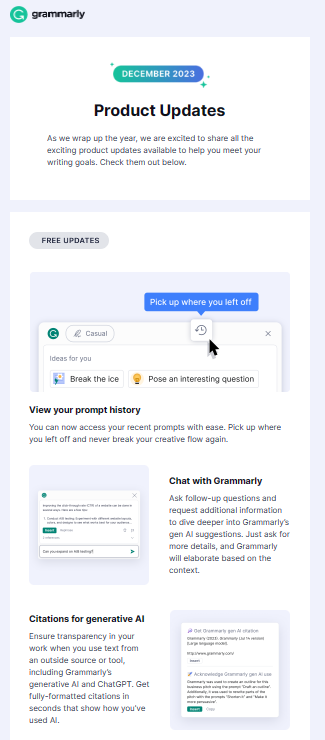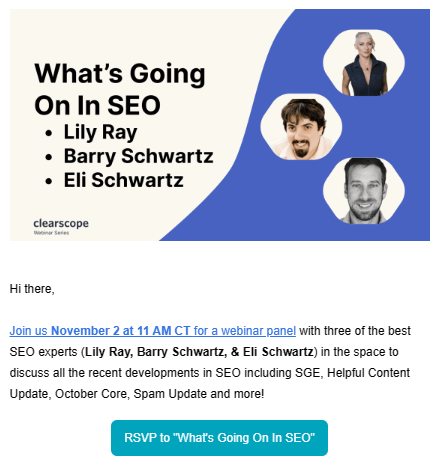Create your very own Auto Publish News/Blog Site and Earn Passive Income in Just 4 Easy Steps
There are all kinds of marketing techniques out there. Social media, digital and print ads, commercials, and email come immediately to mind. But one method you may not be using yet is a newsletter.
What’s a newsletter? A newsletter is an email that conveys information about your brand. You can use it to notify clients of new products and services, upcoming events, industry news, and even your latest blog post. Some companies rely on newsletters to deepen client relationships and demonstrate industry expertise, while others take the self-promotion approach.
Newsletters aren’t new. The Dutch first published a regular newsletter during the 17th century, which contained snippets of global news from various journals. Other cultures followed closely, with the first American newsletter appearing in Boston in 1704. Today, many newsletter publishers use email, rather than print, to reach their subscribers directly.
Email newsletters vs. traditional newsletters
Before the internet, newsletters followed a print format. Publishers could send newsletters directly through the mail or distribute them at various sites. For instance, a company might share an internal newsletter at its office, while a political action committee could print a newsletter and distribute it at a public event.
Newsletters differ from blogs and newspapers in a few ways. First, newsletters summarize information rather than examine a topic in-depth. While a newsletter may just be a page or two, newspapers can extend for dozens of pages. Plus, newspapers cover a variety of topics — global and local news, weather, politics, sports, and entertainment. On the other hand, a newsletter usually covers topics related directly to an organization’s offerings and industry expertise.
Today’s newsletters are often sent via email, which is much cheaper than printed newsletters. There are all kinds of email formatting options, so organizations can easily design an email or use newsletter templates to meet their needs.
Current trends in email newsletter design
Since email marketing software makes customizing messages super simple, many organizations create short newsletters that follow the same formatting and color scheme as their brand and website rather than a text-heavy, traditional black-and-white email.
Segmentation makes it possible to automatically tailor newsletter content directly to a subscriber’s interests. Advanced techniques, like dynamic remarketing, can personalize newsletters to include items based on the subscriber’s recent browsing history and website visit.
Check out these best practices for email list segmentation on our blog!
Components of an effective email newsletter
All newsletters contain a few essential elements, which include:
- Subject line: Compels recipient to open the newsletter.
- Featured content: The leading content of the newsletter, which typically appears at the top; it may use larger fonts or graphics to attract the reader’s attention.
- Layout: Newsletters covering multiple topics follow an organized, visually appealing layout that’s easy to read.
- Call to action: Urges the recipient to do something, like visit your website, schedule an appointment, or buy something.
Understanding the utility of a newsletter
A newsletter allows you to connect directly with your audience. Your subscribers learn more about your organization’s values, purpose, and offerings. They familiarize themselves with your brand’s voice and content. Over time, your newsletter helps you strengthen relationships with your audience.
Newsletters are an ideal way to update your subscribers about industry or organizational news. Regular news updates help establish your brand as an authority in your sector. But newsletters aren’t only for sharing information. You can also use them to promote products, upcoming organizational events, or other marketing purposes.
How to send a newsletter
Follow this step-by-step guide to build a successful newsletter from scratch:
1. Define your newsletter’s purpose
What do you hope to gain from your newsletter? Do you want to share information, strengthen customer relationships, establish credibility, or promote your company? Knowing your purpose helps you determine what content to include and how to position it to subscribers.
2. Build your subscriber list
A successful newsletter requires an audience. Promote your newsletter through your marketing channels, such as social media, your website, and your physical storefront. Describe the value your subscribers will receive from your newsletter, such as exclusive promotions, catered content, or industry news.
3. Create your newsletter
Decide on a format for your newsletter and define your content strategy. Consider using photos, videos, website links, and other tools for stronger customer engagement. Set a frequency to publish your newsletter, such as daily, weekly, biweekly, or monthly.
4. Share your newsletter and monitor the results
Once your newsletter is ready, you can distribute it to your subscribers. Use email tracking software to monitor important metrics like open rates and conversions. You can tweak your newsletter strategy to improve analytics as you learn how your subscribers engage with your content.
5. Choose the right delivery platform
While you can send your newsletter directly to subscribers, a dedicated email marketing platform provides convenient features to streamline your processes and save time. With Constant Contact, you receive customizable email templates, automation tools, and analytics monitoring — all essential for professional newsletters.
6. Determine the right scheduling and frequency
Consider how often you want to communicate with subscribers. Frequent newsletters keep your brand at the top of mind with your clientele, but they can be time-intensive, especially if you have limited marketing resources. When deciding on a schedule, consider your newsletter goals, time availability, and customer needs.
Read: The Best Time to Send a Marketing Email
How to measure the success of your email newsletter
The work doesn’t end when you compose and send a newsletter. You should also assess the performance of your newsletter so you can make changes for even better results.
Key performance indicators and analytics
Here are the key performance indicators (KPIs) and metrics you can use to monitor newsletter performance and subscriber engagement.
- List growth: As you attract subscribers, monitor your growth rates. With the right promotion strategy, you’ll see your list continuously increase.
- Open rates: The open rate tells you what percentage of subscribers opened your newsletter. The higher your open rates, the more eyeballs on your content.
- Click-through rates: Every time a subscriber clicks on a link within your newsletter, it counts as engagement. Higher click-through rates indicate your subscribers are reading your newsletter and clicking to learn more.
- Conversion rate: A conversion can be a sale, download, appointment booking, or any other action you want subscribers to take. The higher your conversion rates, the more successful your newsletter campaign is.
List health and management
It’s good practice to monitor your subscriber list regularly. Consider removing inactive subscribers from your list, especially if you receive undelivered or bounce-back notifications. If you notice a subscriber isn’t engaging quite as frequently as they once did, consider a winback campaign to reattract their interest.
Importance of newsletters in various sectors
Any service provider can benefit from newsletters. Depending on your sector, you might craft newsletters that showcase your expertise, encourage appointment bookings, or update recipients on industry news. For instance, a financial planner might use newsletters to share personal finance advice or discuss investment strategies.
Retailers and other product-oriented companies often use newsletters to notify their audience of new products and upcoming sales events. You might also include how-to guides or customer product reviews to promote and inform your audience.
Website administrators use newsletters to encourage engagement with their site and learn how visitors interact with it. You can utilize your newsletter to build your website’s reputation and gain repeat traffic.
How to create an email newsletter subscribers want to read
Consider the following factors when composing your newsletter campaign to meet the needs of your readers.
Content curation and sourcing
What makes a subscriber want to read your newsletter? Valuable content. Find out what resonates with your subscribers and continually source content that aligns with their interests. With a solid (and relevant) content strategy focused on various personas in your audience, you’ll see high open rates and subscriber engagement.
Design and layout best practices
Your subscribers will read your newsletter on different devices — PCs, laptops, tablets, and smartphones. Optimize your layout so it’s easy to read, no matter what type of device your audience uses. Pay attention to organization and visual appeal. If subscribers can easily follow your newsletter, they’re more likely to read it.
Newsletter personalization techniques
Personalizing communications with your subscribers tends to boost open rates and conversions. Find ways to customize your newsletter, such as including the recipient’s name or providing content relevant to their location and interests.
Types of email newsletters with examples
Not sure what to include in your newsletter? Consider these newsletter examples to inspire newsletter ideas for your business.
Content-driven newsletters
A content-driven newsletter provides relevant, valuable information to subscribers. For instance, this newsletter from the New York Times includes a few links to recently published articles.
A New York Times newsletter highlighting interesting reads for the day. Source: New York Times
Product updates and releases
Like this example from Grammarly, newsletters can highlight product updates and recent releases.
 A Grammarly newsletter showcasing recent product updates. Source: Grammarly
A Grammarly newsletter showcasing recent product updates. Source: Grammarly
Event and community newsletters
Organizations sometimes host events and gatherings for subscribers and the local community. Here’s an example of an event invite newsletter:
 A newsletter invitation for an SEO workshop. Source: Clearscope
A newsletter invitation for an SEO workshop. Source: Clearscope
Employee and internal communications
Employers may use newsletters to keep staff abreast of company news, events, promotions, open roles, and other significant updates.
Newsletter use cases
Let’s take a look at some common newsletter use cases:
Promotional campaigns and sales drives
You can use newsletters to advertise the benefits of your products and services to your subscribers. For instance, including a demonstration video or a recent positive press release can help you attract clients and boost revenue.
Branding and awareness initiatives
Your newsletter can express your brand’s voice and values. You can use it to distinguish your organization from competitors and inform your subscribers of unique offerings.
Lead generation tactics
Engaging in a newsletter drip campaign can strategically build interest among your subscribers. Consider sequencing your newsletters according to the buyer’s stage. As they learn more about your organization, you can incorporate CTAs designed to make a sale.
Company news and announcements
Consider using your email to share important company news or updates. For instance, you can share recent press releases, store openings or closings, and staffing changes.
Customer retention and loyalty programs
A loyalty program rewards subscribers for continuing to shop with you. You might encourage client retention with exclusive discounts, gifts, or other benefits through your newsletter.
Newsletter best practices
Keep these newsletter best practices in mind to make the most of your efforts:
- Craft impactful subject lines. Your newsletter’s subject line is the first thing a subscriber sees — and if it’s not compelling, you won’t experience the open rates you’re hoping for. Aim for subject lines that capture the essence of your newsletter and how your reader will benefit from it.
- Compose effective calls to action (CTAs). Anytime you include a CTA in your newsletter, make sure it’s visible and easy to act on. Use a larger font, a different color, and links to make it simple for subscribers to take the next step.
- Maintain the subscriber list. Pay attention to undelivered and bounced emails, and regularly prune your subscriber list to remove inactive email addresses. Email service providers monitor the deliverability of your emails. If they see you have high bounce rates, they may downgrade your sender score, increasing the likelihood of your newsletters ending up in the spam folder.
- Include GIFs and visual content in newsletters. Use images, GIFs, and videos that add a creative flair to your newsletters.
- Perform A/B testing and optimization. In the early stages of a newsletter campaign, you may struggle to nail down your messaging strategy. A/B testing can help you test copy, subject lines, CTAs, and other newsletter elements to see which provide optimal results.
5 main benefits of sending a newsletter
Craft your newsletter well, and you can expect to capitalize on the following:
- Relationship building and engagement. A newsletter provides an easy and unobtrusive way to deepen client relationships and establish trust.
- Lead generation and nurturing. Subscribers are already interested in your organization; otherwise, they wouldn’t sign up for your newsletter. You can use your newsletter to gently push prospects through your sales cycle.
Read now: 9 Ways to Kickstart Your B2B Lead Generation
- Brand awareness and positioning. Newsletters can help distinguish your organization from competitors and highlight your unique attributes. That’s especially important in highly competitive industries like real estate and financial planning.
- Credibility and authority. Sending subscribers a newsletter chock full of helpful and educational content demonstrates your expertise, helping paint your organization as the go-to in your market sector.
- Valuable audience insights. As your clients engage with your newsletter content, you’ll learn what resonates with them and what doesn’t. You can use the insights to further develop your marketing campaigns and business strategy.
Newsletter marketing tools
With the right software, you can create, distribute, and monitor newsletter performance easily and efficiently. For example, Constant Contact provides newsletter templates, automation tools, subscriber management solutions, and analytics to help you get the most out of your newsletter campaign. Additionally, integration options with other popular business and marketing tools, including Shopify, WordPress, Gmail, Outlook, Salesforce, and social media platforms, help you to centralize your processes.
What’s a newsletter? Your tool for business growth
Now that you know the answer to “What’s a newsletter?” you can put your knowledge to the test and experience all the benefits newsletters offer, including building relationships and strategic brand positioning. Follow our simple process for creating your first newsletter by setting goals and developing a content strategy. As you continue to attract subscribers, use CTAs to encourage your recipients to take action.
To learn more about newsletter marketing, read Constant Contact’s guide for writing a newsletter email. Or explore our newsletter email templates for inspiration!
Create your very own Auto Publish News/Blog Site and Earn Passive Income in Just 4 Easy Steps







